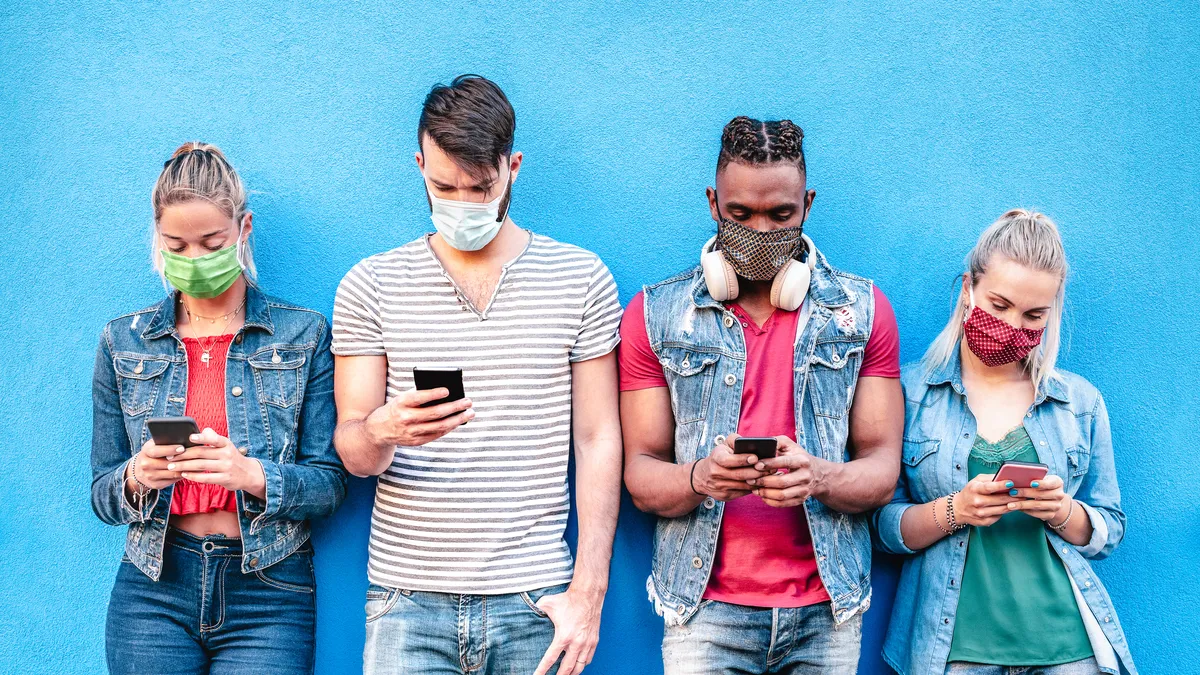To Keisha Chandler, smartphones are effective as learning tools in the classroom. That said, she also knows they can serve as easy distractions for classes, especially during the pandemic when students could use them more freely while in remote learning.
That’s why the K-12 senior manager of professional learning services at ASCD was intrigued when her daughter, a first-year middle school teacher, said her school had offered students a bargain. If they stayed off their phones during class, they could use them during part of their advisory periods every day.
“They wouldn’t fuss because they knew they would get time" on their devices, says Chandler. “It was less stressful.”
Once banned in schools, smartphones morphed into tools that allowed students to access content and data or engage in surveys from their seats. Then the pandemic sent the world home, and for students that meant more autonomy over their time — and more competition for their attention.
Students who attended classes over Zoom or other video conferencing tools could easily open an email tab on their computer or put their phone to the side and watch TikTok while a lecture took place on their main screen. Once back in in-person classrooms, they had a harder time hiding a smartphone or disguising eyes turned downward while watching Instagram Reels.
But pulling students back to pre-COVID-19 days in terms of their smartphone usage may not be simple. The already burgeoning number of preteens and teens who own a smartphone has grown even since the pandemic, from 91% in 2019 to 94% in 2021, according to Common Sense Media.
Plus, educators say these devices can be useful in educational settings when managed and woven into a well-structured curriculum.
Monitor and redirect cellphone use
Chandler said budgeting the time students can access their phones is one strategy schools can use.
She also said schools may want to consider using filters to block access to social media. Those sites and apps can be problematic, as they are some of the more common online locations where digital bullying can take place, according to StopBullying.gov.
To that end, districts across the nation are taking phones away from students when they arrive at school, using containers like Yondr bags to lock smartphones until the end of the school day. The Rochester City School District in New York, along with Bronxdale High School and P.S. 354 in New York City, all employ these bags to curtail student use of smartphones.
Some educators worry about the kind of information students upload to and download from apps like TikTok. Katie Powell, director for middle level programs at the Association for Middle Level Education, noted smartphones can be brought into spaces from classrooms to locker rooms, where students can upload media and share it with the world.
“Things are uploaded to TikTok and Snapchat that should not be made public,” said Powell. “Students don’t always have decision-making skills on just how permanent and significant that can be. So we have a responsibility to help them navigate that responsibly.”
Devices of comfort
Powell said she understands, however, that smartphones can feel like touchstones to students — a way to connect with friends and family. During the pandemic, smartphones have felt like virtual tethers to their home and to the familiar. Removing that connection or telling students they have to give that up can generate a strong reaction from students and a challenge for staff.
Since COVID, students "seem uncomfortable being separated, especially since they had unmonitored access when learning remotely,” says Powell. “There is behavioral pushback coming from the discomfort students are experiencing after checking out from their devices.”
A Pew Research survey conducted in 2018 — pre-pandemic — asked teens what five emotions they might feel if separated from their phones. Some 42% ranked “anxious” as the top feeling in that situation. Research has also shown social engagement online — a text message from a friend or even a happy emoji —can send off a jolt of dopamine and make it more enticing to pick up a smartphone and engage again. And again.
Meanwhile, recent traumatic events in schools might lead families to demand that their children have access to their smartphones during the school day.
Steve VanMatre, superintendent of the Tuloso Midway Independent School District in Texas, had stepped away from school leadership roles in 2013 to go back into the classroom. Even then, he found cell phones to be a valuable educational resource for his class.
While he said he understands some teachers may find the devices counterproductive to teaching their curriculum, he said planning can help make the two work more smoothly together.
“Good teaching can marry the two, and I would like to see more of that, where technology adds to the instructional environment rather than distracts from it,” he said.




















